
|
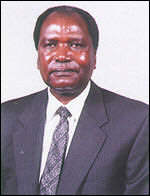
| 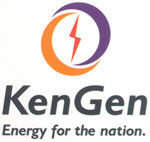
Interview with:
Mr Edwin Wasunna
Managing Director
Nairobi, July 8th, 1999
Contact:
Postal Address:
P.O.Box 47936, Nairobi, Kenya.
Visiting Address:
Stima Plaza, Kolobot Rd, Parklands. Nairobi.
Tel : +254 (2) 248833
Fax : +254 (2) 248848
E-mail : kengen@africaonline.co.ke
Website : www.africaonline.co.ke/kengen
|
KenGen became an independent company the moment it separated from Kenya Power & Lighting Co. Why was that so?
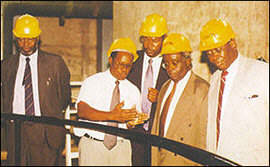
KenGen separated from Kenya Power & Lighting Company Ltd. in 1997. The role of KenGen is to generate electricity and sell to Kenya Power & Lighting Co. The reforms in the power sector were aimed at attracting private sector participation. Funding of projects in the power sector has been done through bilateral and multilateral funding agencies.
The main reason behind the separation of generation from transmission and distribution was to attract greater private investment into the generation business. Previously, most projects in the energy sector were funded through soft loans. However due to the limitations of such funding, it was seen as more prudent to direct these funds towards developing social amenities, which would otherwise not attract alternative funding, and leave the power sector, which is more lucrative, to attract private investors.
KenGen has to prepare itself to face the stiff competition that will mount with the number of IPPs on the increase. Development of power plants is on tender basis, where all interested parties, KenGen included, will have to tender either as an individual company or in partnership with others both locally and internationally.
Do you have any projects underway?
We have about five projects presently being undertaken countrywide. Two of these projects, one 75 MW diesel thermal station and the country's second geothermal power station, a 64 MW installation, have been offered to private investors. These will be in place by the year 2003.
KenGen is currently undertaking the construction of a 75 MW diesel thermal plant at Kipevu, Mombasa, a 60 MW hydro plant at Sondu Miriu in Western Kenya and a 64 MW geothermal plant at Olkaria in Naivasha. They are at various stages of implementation.
What is your relationship with the Independent Power Producers (IPP's)?
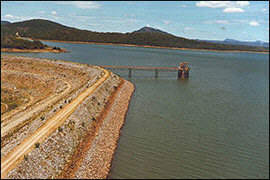
Since IPPs are our competitors, we all compete in selling power to Kenya Power and Lighting Company (KPLC). The Kenya Power and Lighting Company Ltd. basically selects IPPs. KPLC advertises in the local media, internationally and in the development forum of the United Nations. Companies are invited to express their interest in the projects. A list of applicants is drawn and short listed companies invited for pre-bid conferences. During these conferences, questions or concerns raised by the companies are addressed and visits are made to the sites. The companies then submit their bids
Currently two IPPs are operational in the country. IberAfrica situated in Nairobi generates 46MW and Westmont in Mombasa generates 43MW. These IPPs came in as a stopgap measure when there is power shortage in the country.
Our 75 MW plant at Kipevu is expected to come on stream in October 1999, and the 60MW hydro plant at sondu Miriu is expected to be commissioned by the year 2002. These will inject the much-needed extra power into the national grid. However the Government and KPLC have sent tenders for the construction of two other stopgap stations which will pump and extra 110 MW to the grid in about two years time.
How are you preparing yourselves to compete with multinationals that are already entering the market?
Right now our hands are full. We have these three projects that are stretching our financial resources. Fortunately, they have been funded by multilateral and bilateral agencies and the cost is not as high as it would have been had we borrowed money at market rates. We hope that after executing these projects, and depending on our performance, two to three years from now, we should be able to demonstrate and win the confidence of investors. | Do you have environmental policies?
We are environmentally friendly. We have one of the best-trained workforces and have a complete unit of environmental scientists. We make every effort to use the latest technology, and we frequently upgrade our systems. In all our activities, we are conscious about the environment. We have just completed the re-settlement phase at Sondu Miriu, where the company invested a lot of time and money to ensure that the residents and the environment were not adversely affected. Seminars were conducted where qualified resource people educated the residents, usually in their vernacular tongue, on various issues about the re-settlement. The contractors have also been instructed not to cause unnecessary damage on the environment. We have weekly progress meetings with community elders. Two schools and a church, which have been relocated, will be re-built by the company. These will be bigger and better with facilities with commodities they previously lacked such as water and electricity. These are some of the advantages of the project to the residents.
Where does KenGen get its technology from?
The technology comes from developed countries where they have the resources to do all the research and develop it. We do this by getting our professional staff and encouraging them to join in international professional bodies, to attend conferences etc. The benefit we get from these conferences is much higher, so we feel that it is worth sponsoring them. We get journals from various professional groups that are working on these projects so that they up-date their knowledge and from time to time, we send them for improvement courses.
Could you give us some general figures about KenGen?
We have about 1,500 employees. We have installed about 700 Mw, and we generate around 90% of the country's capacity.
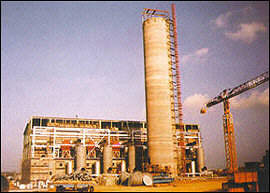
What about alternative energy sources?
Currently we have two experimental units of wind generators. The Ministry of Energy is looking into the possibility of using wind generators as a more cost-effective way of generating energy. Wind generators have been set up in North Eastern Kenya, where the wind speed is high and the area is scarcely populated. Wind being a natural resource, it is a cheap source of generation. We are, however, focussing on other cost effective ones, like geothermal. Geothermal energy sources will be tapped to contribute more energy in the next 10 - 15 years.
Do you foresee going public?
We are 100% government owned. If we are going to be required to raise money to invest, we will have to sell shares, in which case, private people will have to come in. At some stage I see private investors coming to invest in the company.
Could you give us a final message for our readers?
Our mission statement is "to produce energy in the most cost effective and environment friendly" manner. We are an employee-focused organization. We believe employees are our biggest resource. There are discussions through the East African Corporation to see how different countries can link their systems. Already we are linked with Uganda, which is exporting power to Kenya and we hope that we will soon link with Tanzania, and when this happens, anybody can import and export power throughout the region. Basically, ours should be the most cost-effective method and if it is, people will want to import it. |
|
© World INvestment NEws, 1999.
This is the electronic edition of the special country report on Kenya published in Forbes Global Magazine.
November 29th 1999 Issue.
Developed by AgenciaE.Tv |
|
| | | | |
| |
|

